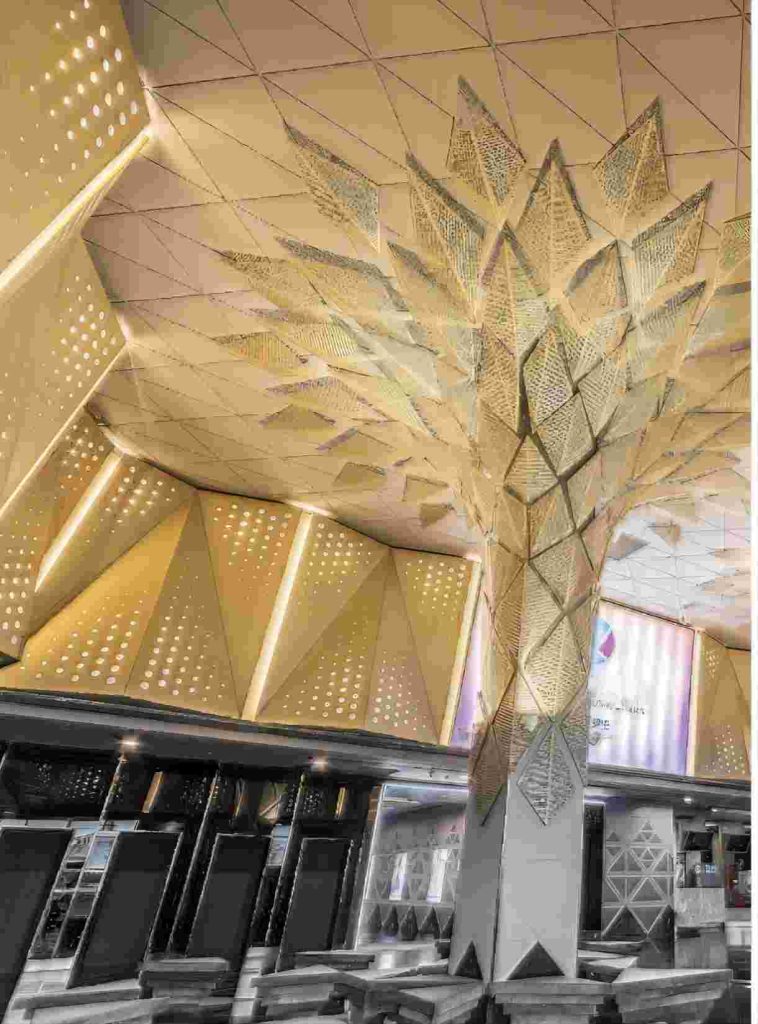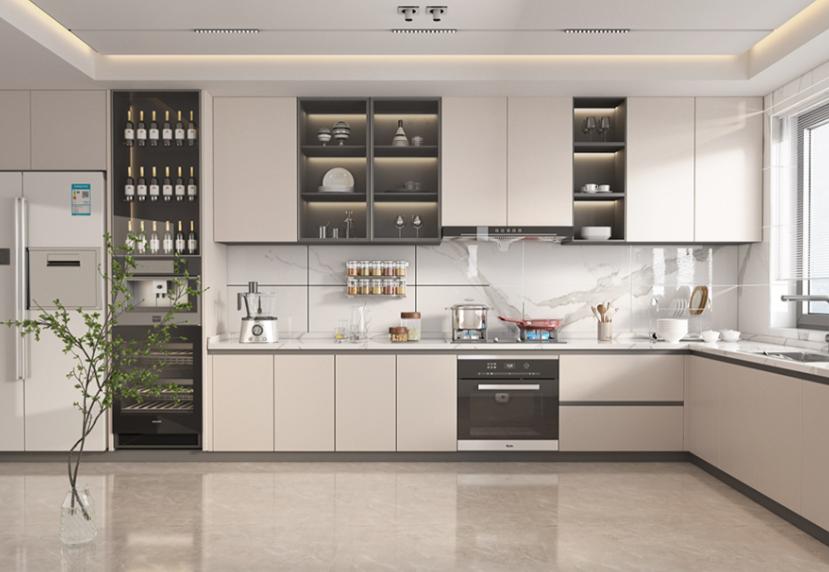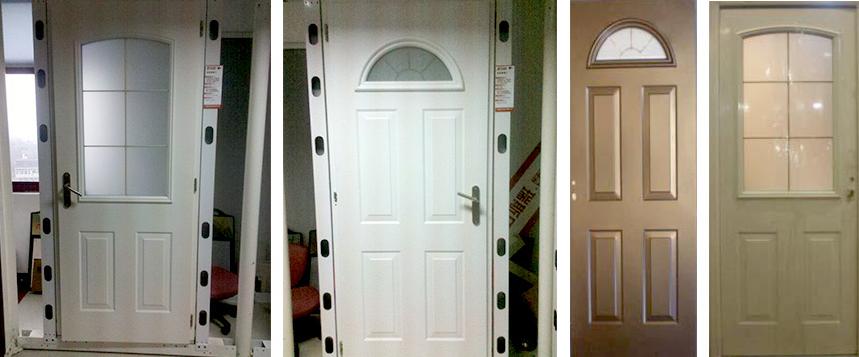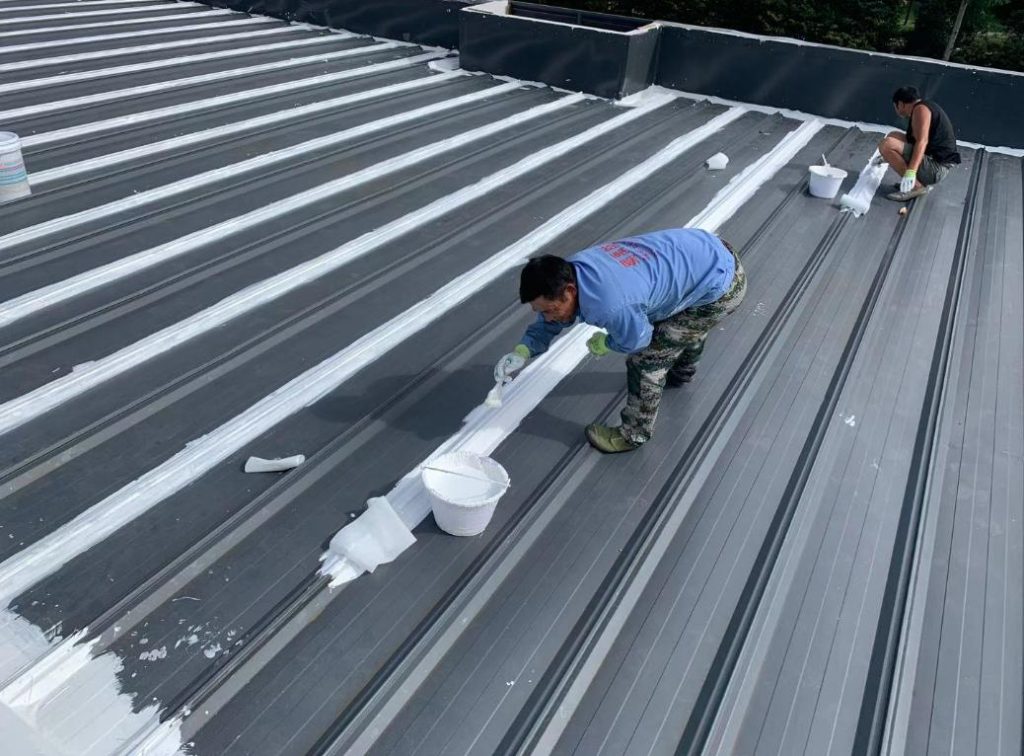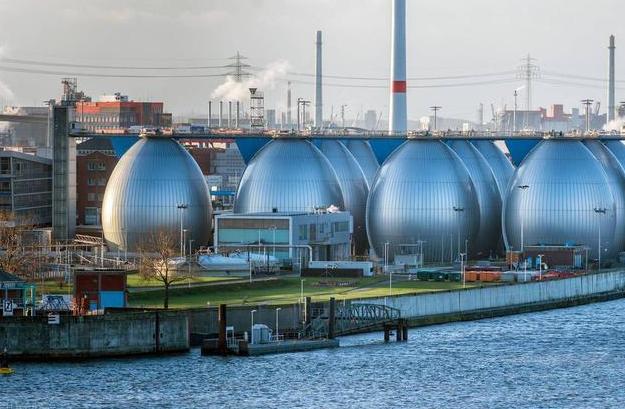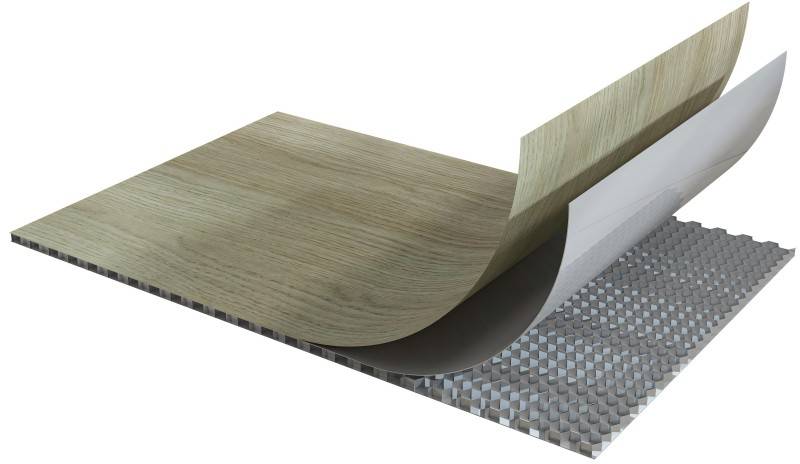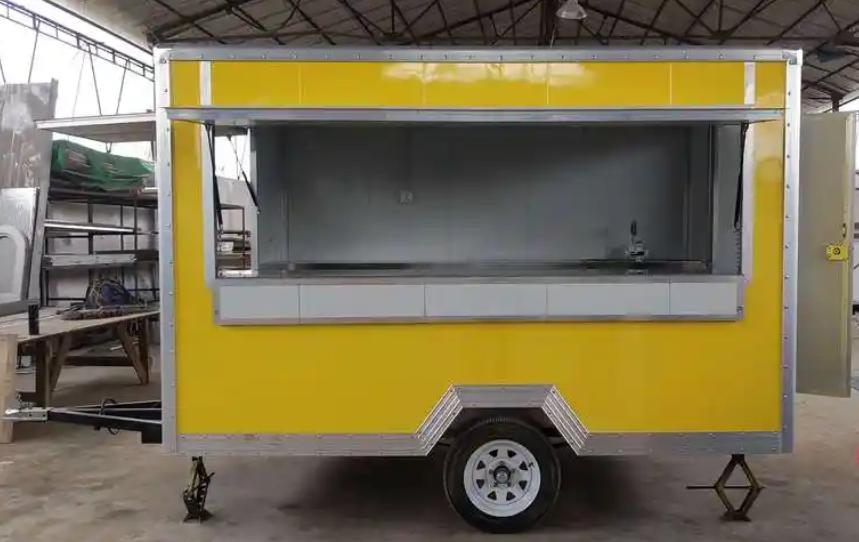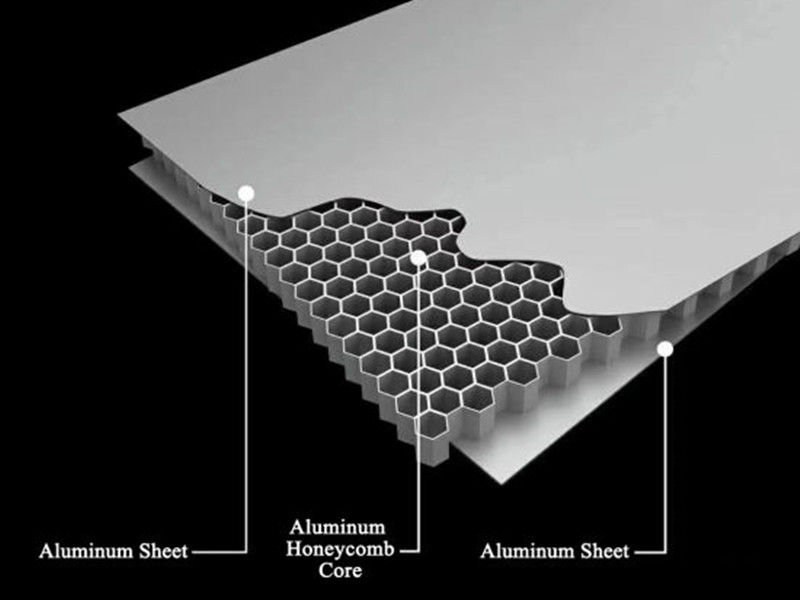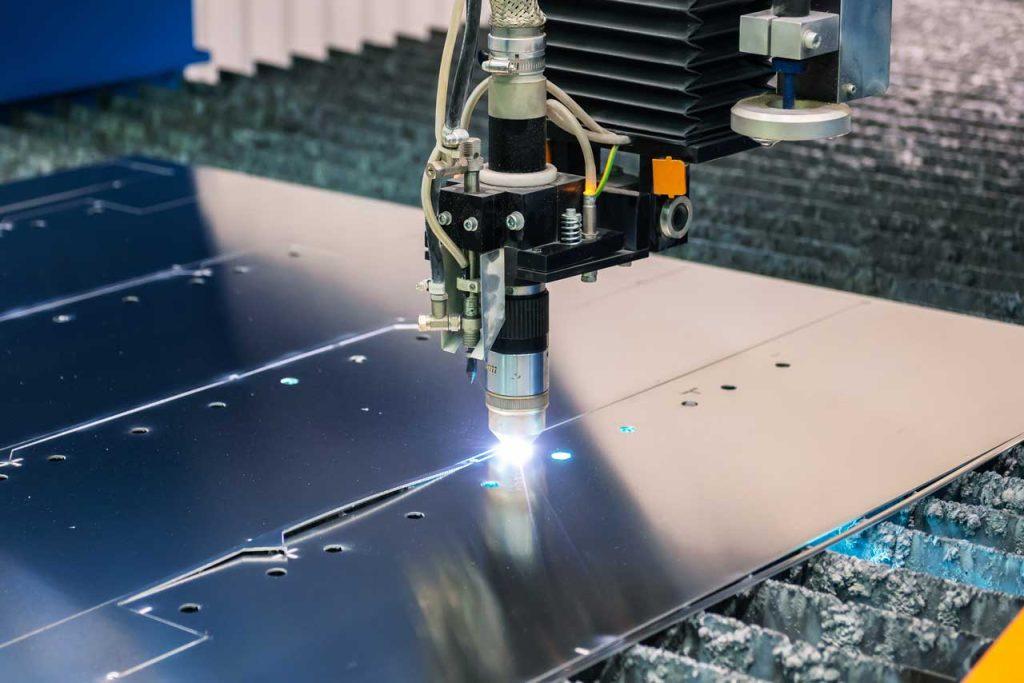Aluminum sheets with holes, also known as perforated aluminum sheets, have gained significant popularity in the field of architecture. These versatile materials offer a blend of functionality and aesthetic appeal, making them ideal for various architectural applications. This article delves into the top applications of perforated aluminum sheets in architecture, highlighting their benefits and showcasing real-world examples.
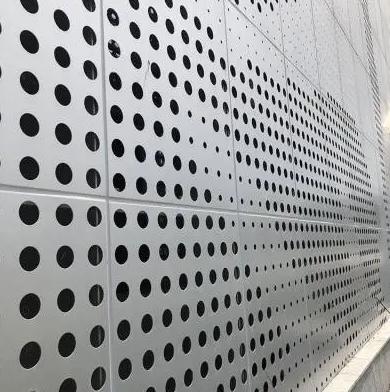
1. Facades and Cladding
Facades and cladding play a crucial role in a building’s exterior, providing both protection and aesthetic value. Perforated aluminum sheets are increasingly used in these applications due to their durability, lightweight nature, and design flexibility.
Benefits
- Aesthetic Appeal: Perforated designs can create intricate patterns, adding a unique visual element to the building.
- Ventilation: Allows for natural airflow, reducing the need for artificial ventilation.
- Sun Protection: Reduces solar heat gain, enhancing energy efficiency.
Examples
- The Al Bahr Towers in Abu Dhabi: Featuring a dynamic facade with perforated aluminum screens that open and close in response to sunlight, reducing heat gain while providing a distinctive aesthetic.
- The Broad Museum in Los Angeles: Uses perforated aluminum panels to create a striking, honeycomb-like exterior.
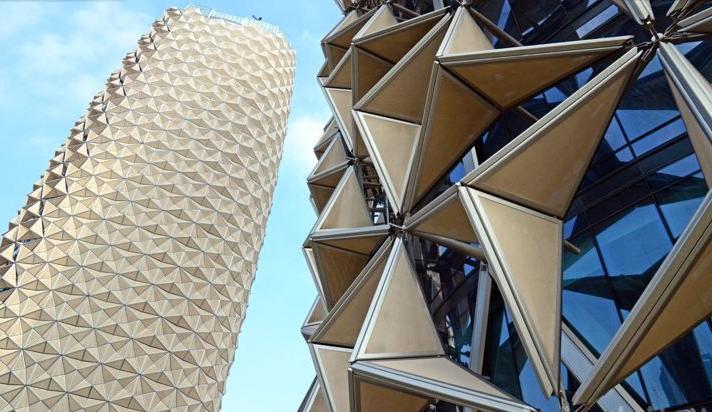
2. Sunshades and Screens
Sunshades and screens are essential for controlling sunlight and enhancing energy efficiency in buildings. Perforated aluminum sheets are ideal for these applications due to their ability to diffuse light while maintaining visibility.
Advantages
- Energy Efficiency: Reduces the need for artificial cooling by minimizing solar heat gain.
- Visual Comfort: Provides shade while allowing natural light to filter through, reducing glare.
- Design Flexibility: Customizable patterns can match the building’s aesthetic.
Examples
- The New York Times Building: Features a facade with perforated aluminum screens that reduce solar heat gain while maintaining visibility and daylighting.
- The Allianz Headquarters in Zurich: Utilizes perforated aluminum sunshades to control sunlight and create a dynamic facade.
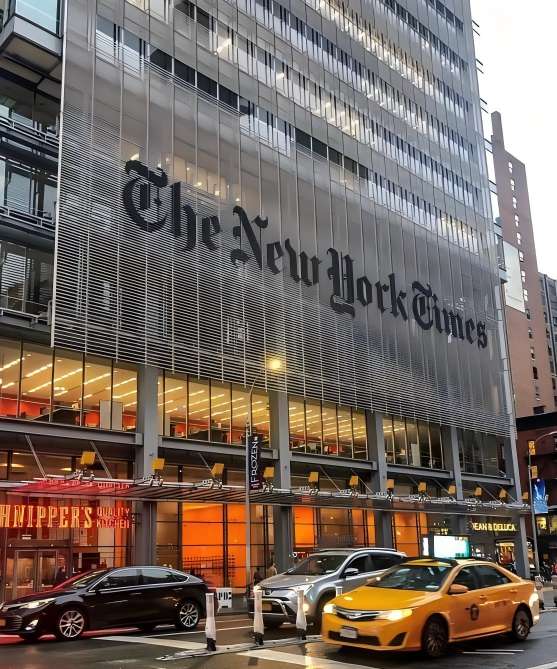
3. Balustrades and Railings
Balustrades and railings are critical for safety and design in both interior and exterior spaces. Perforated aluminum sheets offer a modern and stylish solution for these applications.
Benefits
- Safety: Provides a sturdy barrier without obstructing views.
- Aesthetics: Enhances the visual appeal with customizable patterns and finishes.
- Low Maintenance: Resistant to corrosion and easy to clean.
Examples
- The CityLife Residences in Milan: Incorporates perforated aluminum railings that combine safety with a sleek, modern design.
- The Copenhagen Towers: Features perforated aluminum balustrades that add a contemporary touch to the building’s balconies.
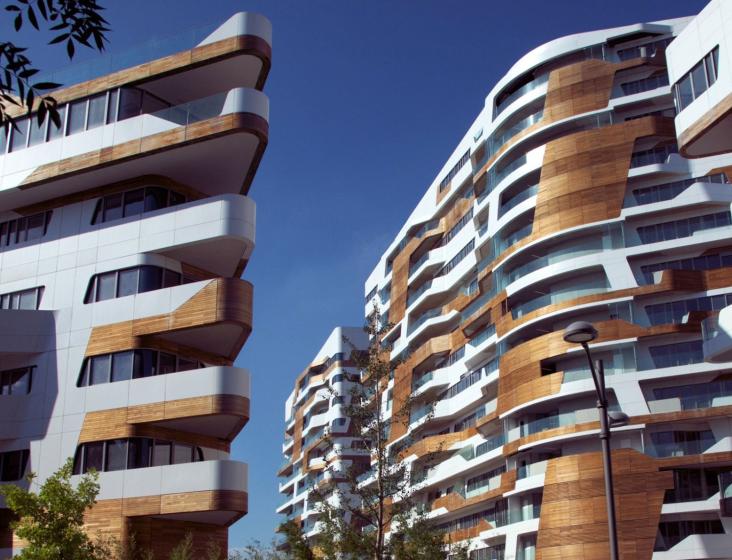
4. Ceilings and Canopies
Perforated aluminum sheets are used in ceiling designs to enhance visual interest and acoustic performance. Canopies made from these sheets provide shelter while adding an architectural element to outdoor spaces.
Advantages
- Acoustics: Helps in sound absorption, reducing noise levels.
- Aesthetics: Creates visually appealing patterns and textures.
- Durability: Resistant to weather and environmental factors.
Examples
- The Oslo Opera House: Features a perforated aluminum ceiling that enhances acoustics and adds to the interior’s visual appeal.
- The Yitzhak Rabin Center in Tel Aviv: Uses perforated aluminum canopies to provide shade and add an architectural statement to the outdoor areas.
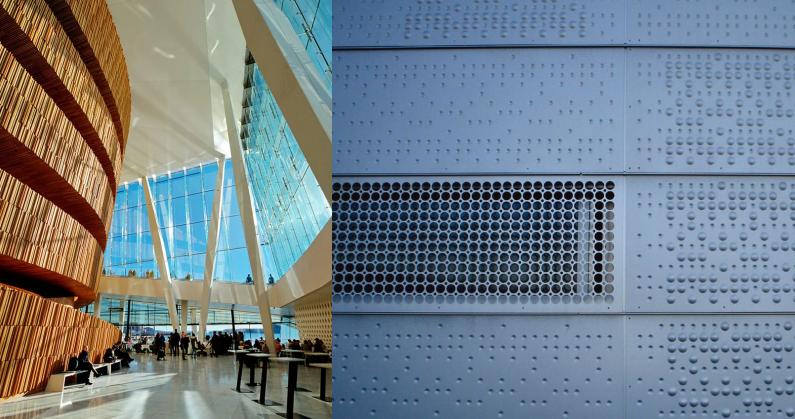
5. Interior Design Elements
Perforated aluminum sheets are increasingly used in interior architecture for decorative partitions, wall panels, and room dividers. They add texture and visual interest while maintaining functionality.
Benefits
- Design Versatility: Customizable patterns to suit various design themes.
- Transparency and Light: Allows light to pass through, creating dynamic lighting effects.
- Durability: Long-lasting and resistant to wear and tear.
Examples
- The Ace Hotel in London: Features perforated aluminum partitions that create a modern, industrial look.
- The Google Offices in Zurich: Uses perforated aluminum wall panels to add visual interest and delineate spaces within the office.
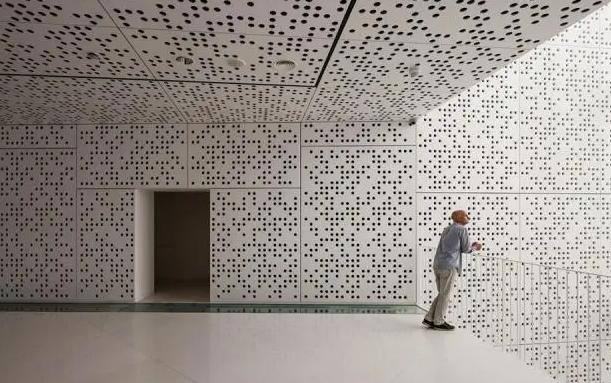
6. Acoustic Panels
Acoustic performance is crucial in many architectural spaces, such as offices, theaters, and public buildings. Perforated aluminum sheets are used to create effective acoustic panels that enhance sound quality.
Advantages
- Sound Absorption: Reduces noise levels and improves acoustic comfort.
- Aesthetic Appeal: Customizable designs to match the interior decor.
- Durability: Long-lasting and resistant to environmental factors.
Examples
- The Elbphilharmonie in Hamburg: Uses perforated aluminum acoustic panels to ensure optimal sound quality in the concert hall.
- The Sydney Opera House: Incorporates perforated aluminum panels to enhance acoustics in its various performance spaces.
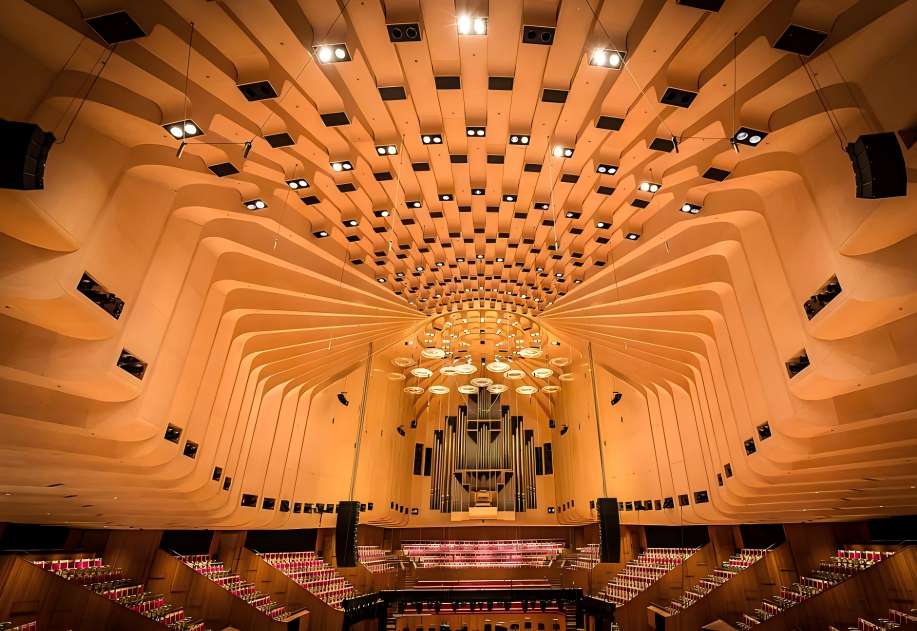
7. Ventilation and Airflow
Ventilation is vital for maintaining indoor air quality and comfort. Perforated aluminum sheets are used to enhance natural ventilation in buildings, promoting airflow while providing aesthetic value.
Benefits
- Air Quality: Enhances natural ventilation, improving indoor air quality.
- Energy Efficiency: Reduces the need for mechanical ventilation systems.
- Design Flexibility: Customizable patterns to suit the building’s design.
Examples
- The Eden Project in Cornwall: Uses perforated aluminum sheets to enhance natural ventilation in its biodomes.
- The Bullitt Center in Seattle: Features perforated aluminum panels that promote natural airflow, contributing to the building’s sustainability goals.
Conclusion
Perforated aluminum sheets offer a versatile and practical solution for various architectural applications. From facades and sunshades to interior design elements and acoustic panels, these sheets provide a unique blend of functionality and aesthetic appeal. As architects and designers continue to explore innovative uses for perforated aluminum, its potential in architectural design will only continue to grow.
CHAL is a leading supplier of high-quality aluminum products, including perforated aluminum sheets. With a commitment to excellence and innovation, CHAL offers a wide range of aluminum sheets with holes that cater to various architectural and industrial applications. Their products are known for their durability, precision, and aesthetic appeal, making them an ideal choice for architects, designers, and builders.

